Imagine stepping outside into a transformed backyard, where the perfect garden canopy casts a gentle shade, inviting relaxation and enjoyment. Whether you’re a newbie eager to dabble in outdoor design or a seasoned pro with a green thumb, our guide, “11 Garden Canopy Ideas for Your Next Project,” is your ticket to creating a stunning oasis right at home. These ideas will not only enhance your space but also elevate your outdoor living experience, bringing joy and beauty to every sun-soaked day.
From boosting your property’s aesthetic appeal to providing practical solutions for comfort and privacy, these canopy ideas promise endless rewards. As you explore our curated selections, you’ll find options to suit any style or budget, empowering you to confidently transform your outdoor area into a personal paradise. Get ready to embrace the satisfaction of crafting a captivating outdoor haven that’s perfect for gatherings, solitude, and everything in between!
Select Weather-Resistant Canopy Fabrics

Choosing the right canopy fabric is crucial for creating a durable and attractive outdoor shelter. For beginners, consider starting with polyester and canvas as they offer a good balance between water resistance and breathability. These materials are widely available and relatively easy to handle for DIY projects. For advanced users looking for longevity and enhanced protection, acrylic-coated polyester or SUNBRELLA® fabric are excellent options, known for their UV resistance and durability against harsh weather conditions.
When selecting fabrics, ensure they are treated for UV protection and mildew resistance to maintain their appearance and functionality over time. Opt for fabrics with a minimum weight of 250gsm (grams per square meter) for added sturdiness. It’s important to also consider color choices; darker shades can provide more shade but may fade faster, while lighter colors keep the space cooler.
- Measure your canopy frame accurately to avoid fabric waste.
- Invest in quality fabric that can withstand seasonal changes.
- Regular maintenance, like removing debris and occasional washing, will extend the life of your canopy.
Incorporate Retractable Awning Systems
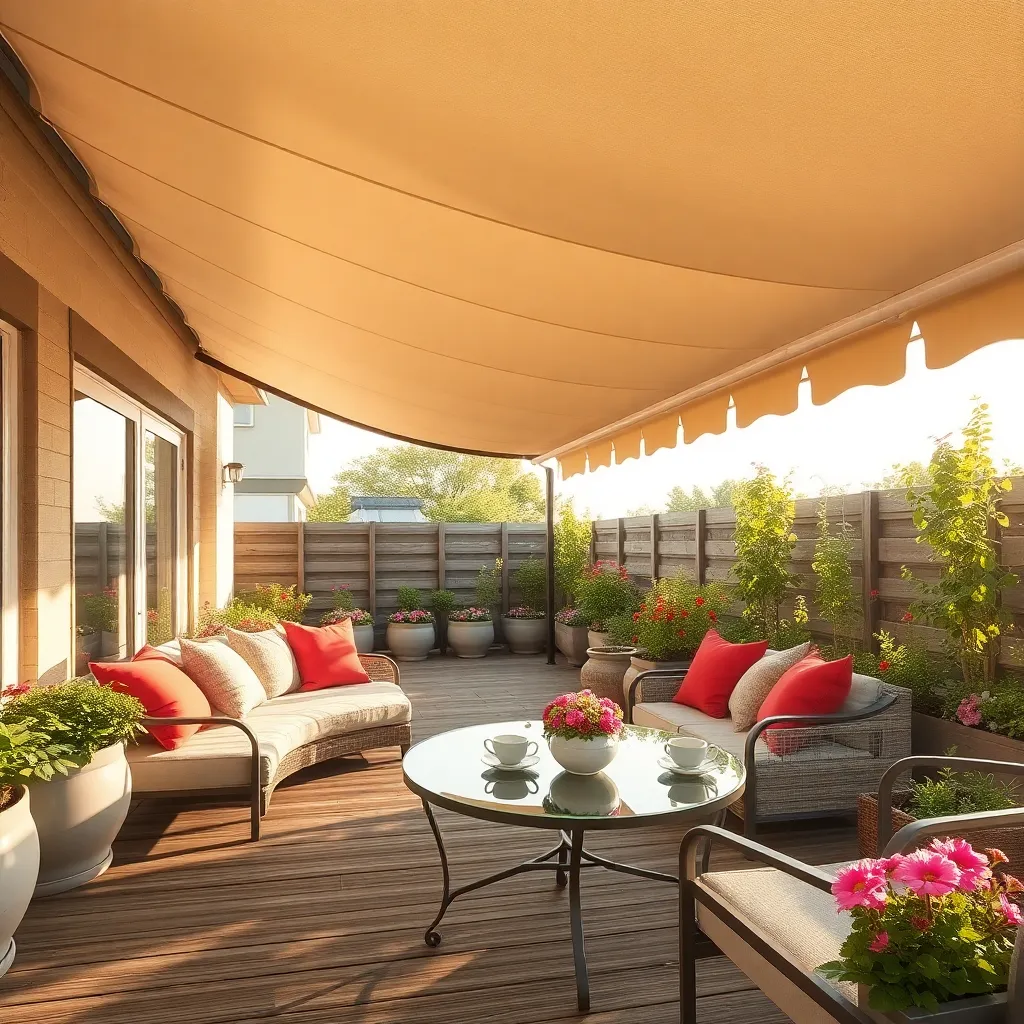
Retractable awning systems offer flexibility and style, making them an ideal choice for garden canopies. These systems allow you to adjust the amount of shade or sun exposure with ease, providing comfort in various weather conditions. When selecting a retractable awning, consider materials like water-resistant acrylic or polyester that can withstand the elements. For a seamless integration with your garden’s aesthetic, choose a color and pattern that complements your outdoor furniture and plantings.
Installation is straightforward for most homeowners, but ensuring the system is securely anchored is crucial. Mounting the awning to a sturdy structure such as a wall or a pergola ensures stability and longevity. Advanced users might opt for motorized systems with remote controls, adding convenience and a touch of luxury to their outdoor space. Remember to regularly check the awning’s mechanisms and fabric for wear and tear, ensuring it remains a functional and stylish part of your garden for years to come.
Enhance Privacy with Side Panels
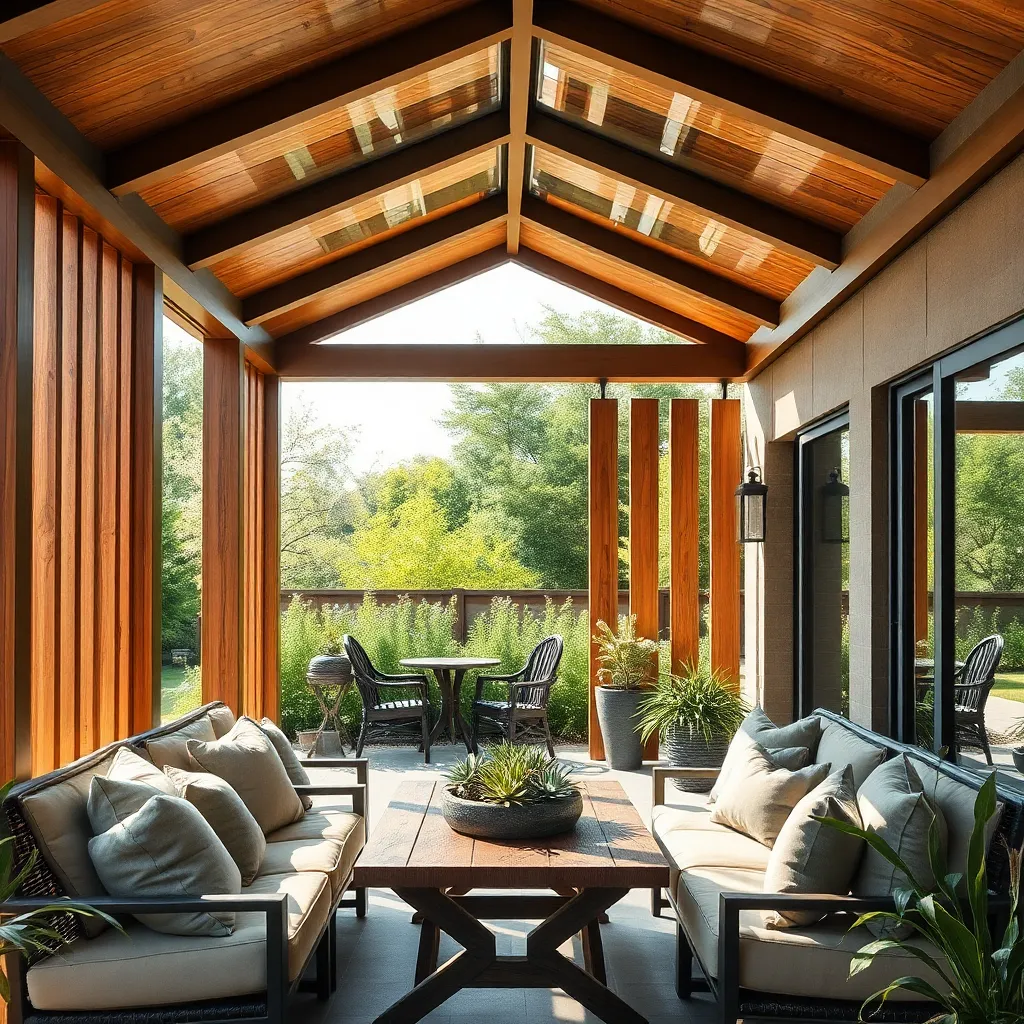
Enhancing privacy in your garden can be as simple as adding side panels to your canopy. These panels can be crafted from a variety of materials, such as weather-resistant fabric, bamboo, or even wood slats. For a quick setup, consider using **heavy-duty outdoor curtains** with tiebacks for easy opening and closing, allowing you to adjust the level of privacy as needed. Beginners might opt for **pre-fabricated panel kits**, which are easy to install and come with all necessary hardware.
For those looking to add a touch of sophistication, incorporating **lattice panels** can provide both privacy and an opportunity for climbing plants like clematis or ivy. Ensure the panels are at least **four to six feet high** to create an effective barrier from prying eyes. Advanced gardeners might explore **custom-built panels** with integrated planters or decorative cutouts for a personalized touch. Remember to anchor your panels securely, using stakes or brackets, to withstand wind and weather, ensuring durability and long-lasting privacy.
Add Climbing Plants for Shade
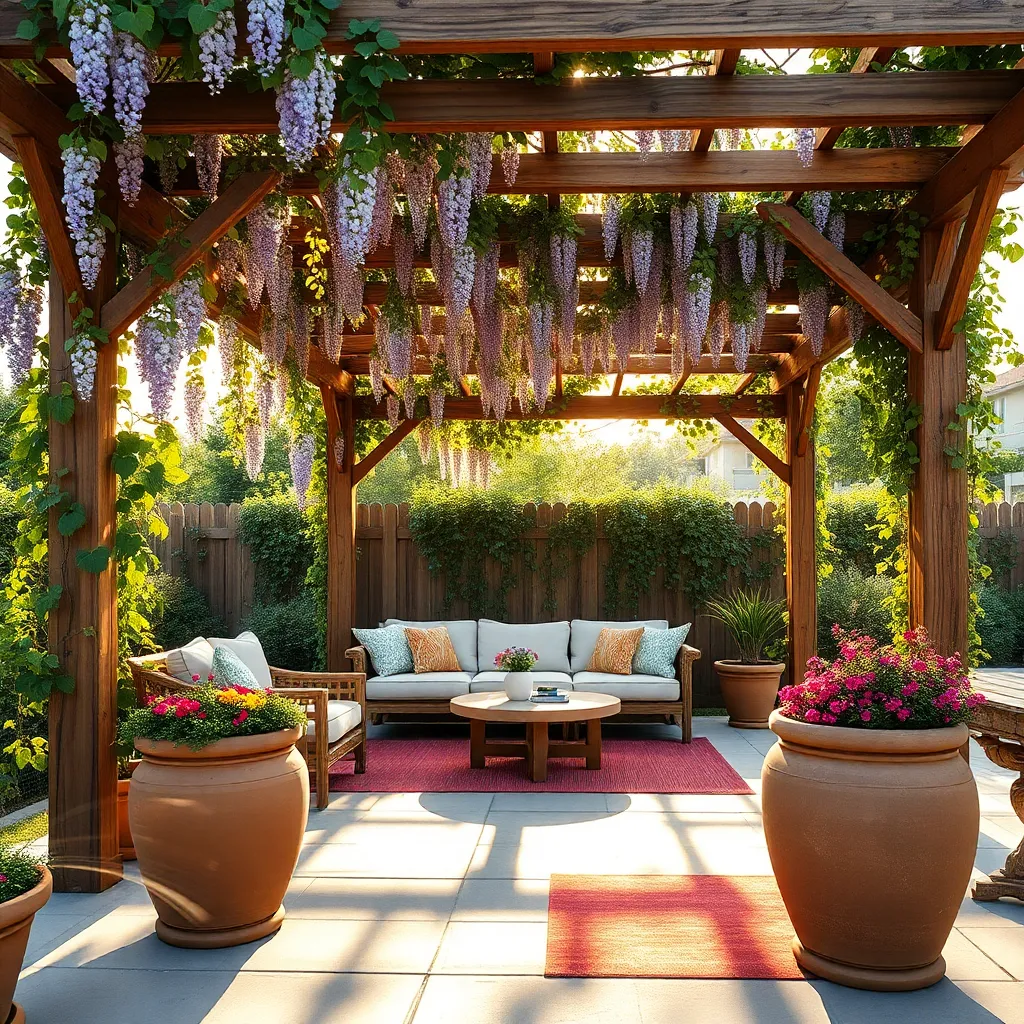
Incorporating climbing plants into your garden canopy design not only adds natural beauty but also provides excellent shade. Consider using easy-to-grow climbers like Clematis, Wisteria, or Honeysuckle to create a lush, green canopy. These plants can be trained to climb over pergolas or trellises, offering dappled sunlight and cooler temperatures below. For beginners, a simple wooden or metal trellis, approximately 6-8 feet tall, can support your chosen climbers effectively.
For a more advanced project, create a living roof by integrating a sturdy pergola with horizontal beams that the climbing plants can weave through. Ensure your structure is made from durable materials like pressure-treated wood or galvanized steel to withstand various weather conditions. Regular maintenance such as pruning and training the vines will encourage healthy growth and optimal shade coverage. With these tips, your garden canopy will become a serene retreat, perfect for relaxing or entertaining.
Install LED String Lights
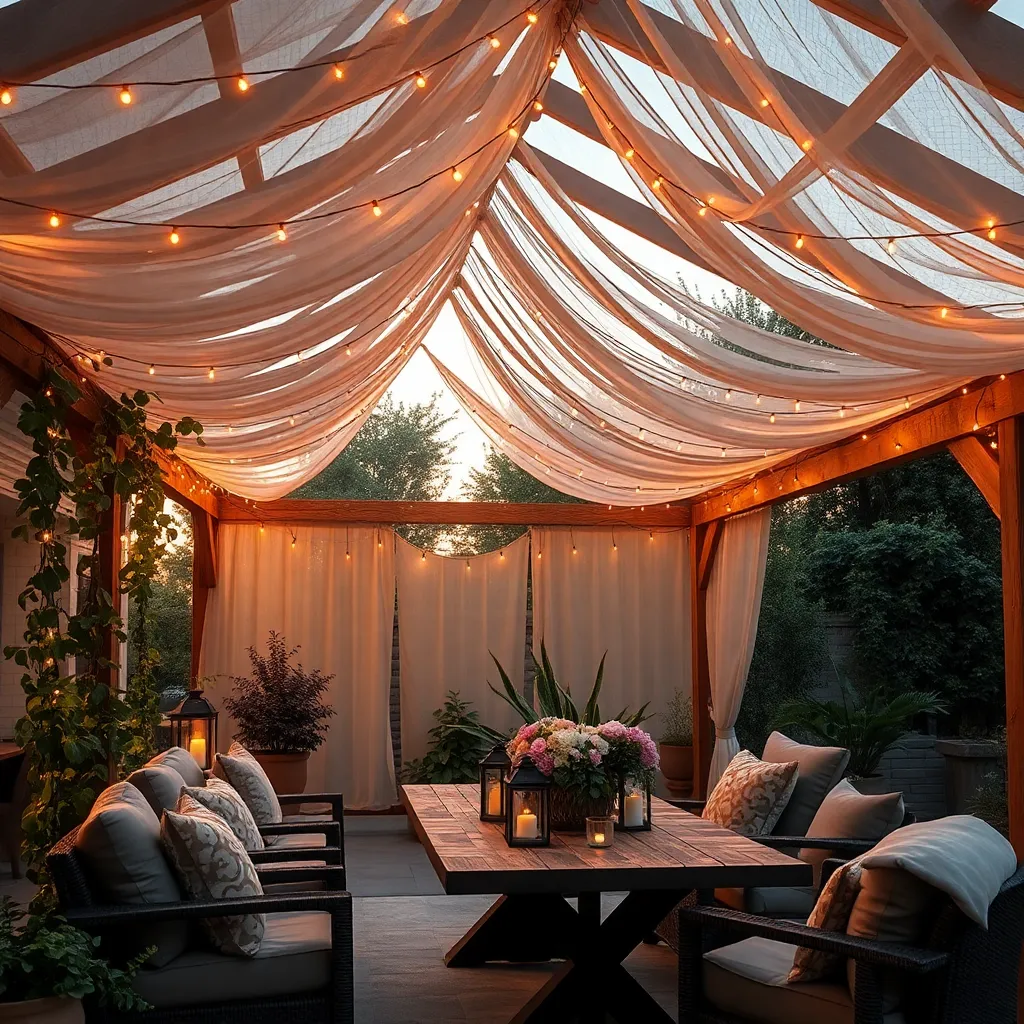
Enhancing your garden canopy with LED string lights is an excellent way to create a warm, inviting atmosphere. Start by choosing weather-resistant LED lights to ensure durability in various climates. Solar-powered options are energy-efficient and eliminate the need for nearby power sources. For beginners, a simple zigzag pattern across your canopy can add charm, while more advanced gardeners might consider outlining the structure’s edges for a more defined look.
When installing, ensure the lights are securely fastened to prevent damage from wind or rain. Use plastic clips or zip ties to attach the lights to the canopy frame. For a professional touch, measure the spacing between lights before installation to achieve even distribution.
- Consider dimmable LED lights
- Choose warm white tones for a cozy feel
With these steps, your garden canopy will transform into a magical evening retreat.
Opt for Adjustable Canopy Heights
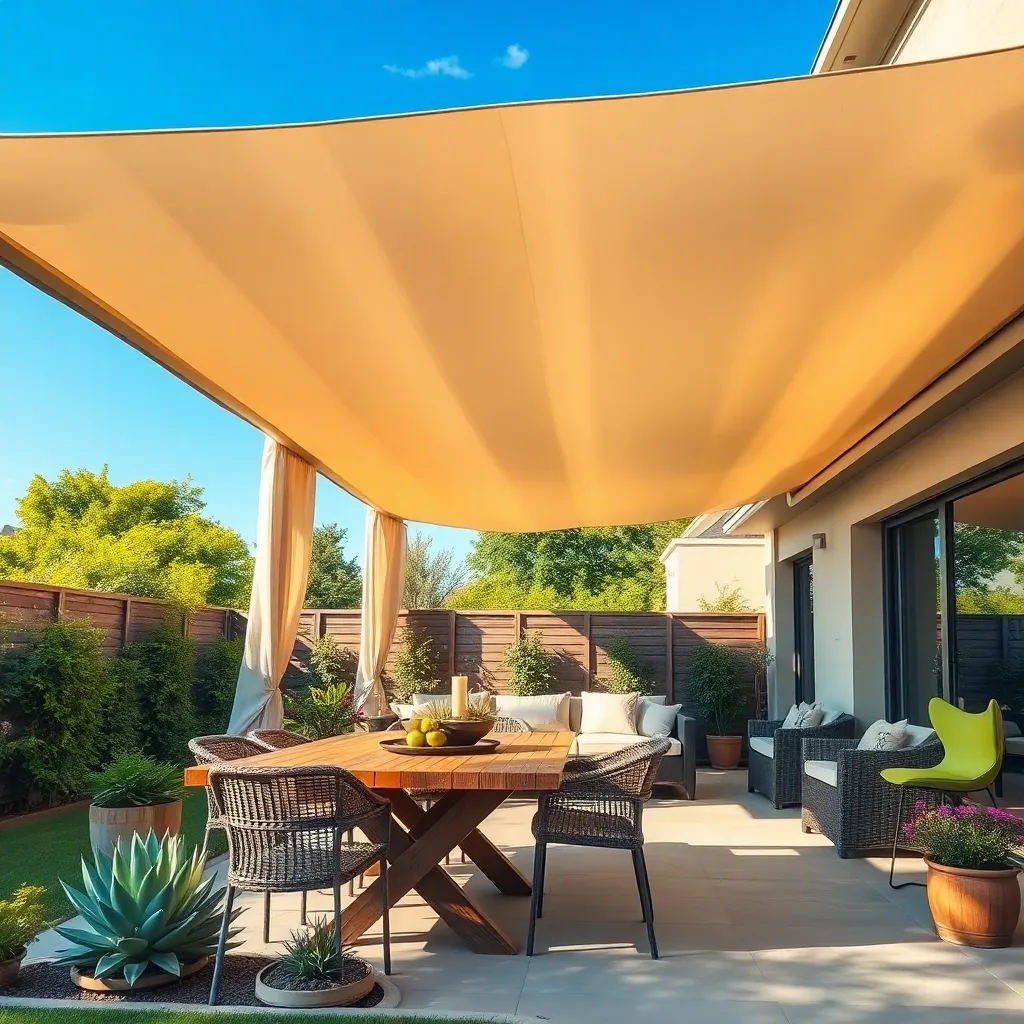
Adjustable canopy heights offer the flexibility to modify your garden’s shade according to your needs, ensuring comfort throughout the day. Consider installing a telescopic pole system, which allows for easy height adjustments. This system is ideal for accommodating various weather conditions—lower the canopy on windy days for stability, or raise it to let in more light when the sun is gentle. For beginners, start with a basic aluminum frame for its lightweight and rust-resistant properties, ensuring longevity and easy handling.
Experienced gardeners might opt for more robust materials like wood or steel, which add a distinct aesthetic while providing durability. Incorporate adjustable tensioning mechanisms to fine-tune the canopy’s tautness and prevent sagging over time. When planning your project, ensure that the canopy fabric is UV-resistant and waterproof to maximize its usability and lifespan. Keep in mind the dimensions of your outdoor space to select a canopy that provides ample coverage without overwhelming the area, effectively blending function with style.
Anchor Canopy with Weighted Bases
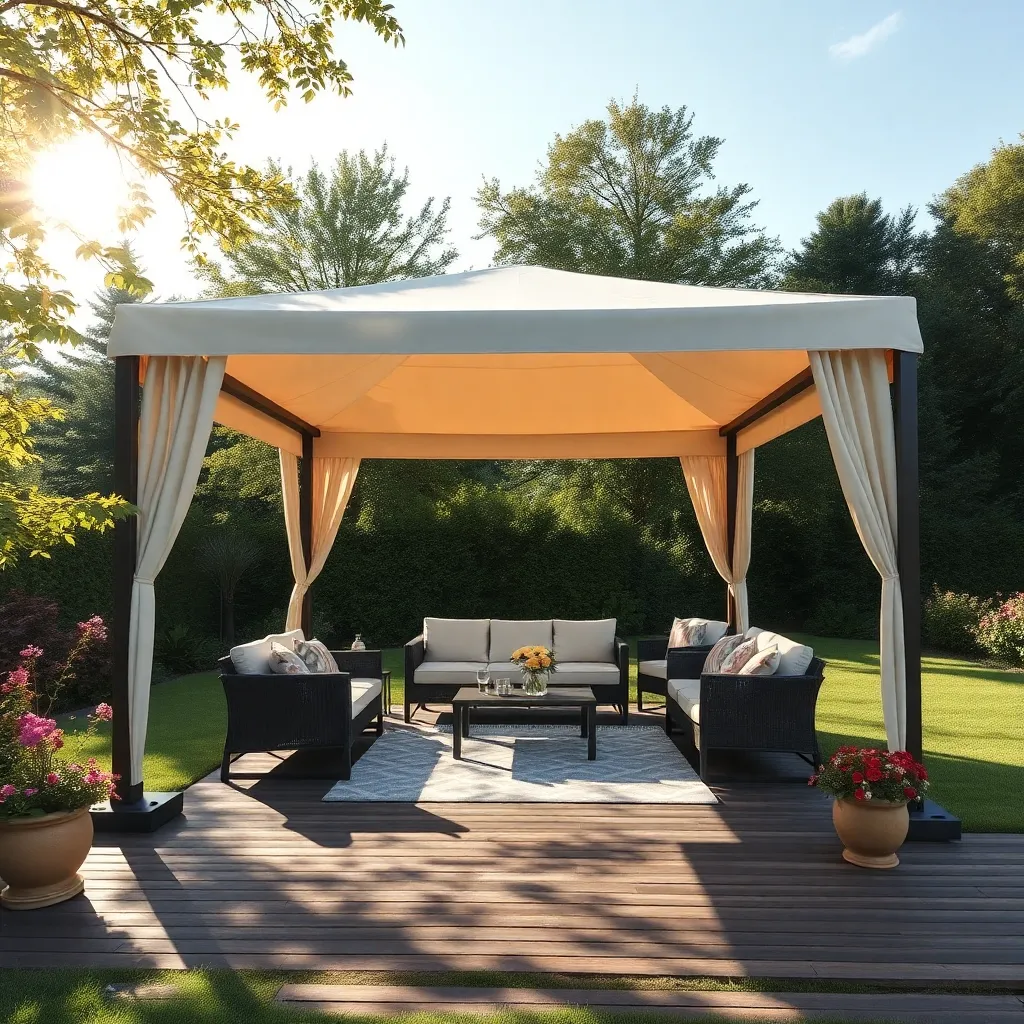
For a sturdy and versatile garden canopy, consider anchoring it with weighted bases. This approach is particularly useful for those who might not want to or cannot use ground stakes, like when installing on a patio or deck. Weighted bases provide stability by using heavy materials such as sandbags, concrete blocks, or specially designed weights that fit over canopy legs. These materials ensure your canopy remains secure even in windy conditions.
When selecting weighted bases, ensure they are compatible with your canopy’s design and leg dimensions. Look for bases made from durable materials like UV-resistant plastic or powder-coated steel for long-lasting performance. For advanced stability, you can combine weighted bases with cross-bracing techniques using tension ropes. This dual approach not only enhances security but also maintains the canopy’s sleek appearance. By following these tips, you can enjoy a reliably anchored canopy that’s ready for any garden gathering.
Choose UV-Blocking Materials
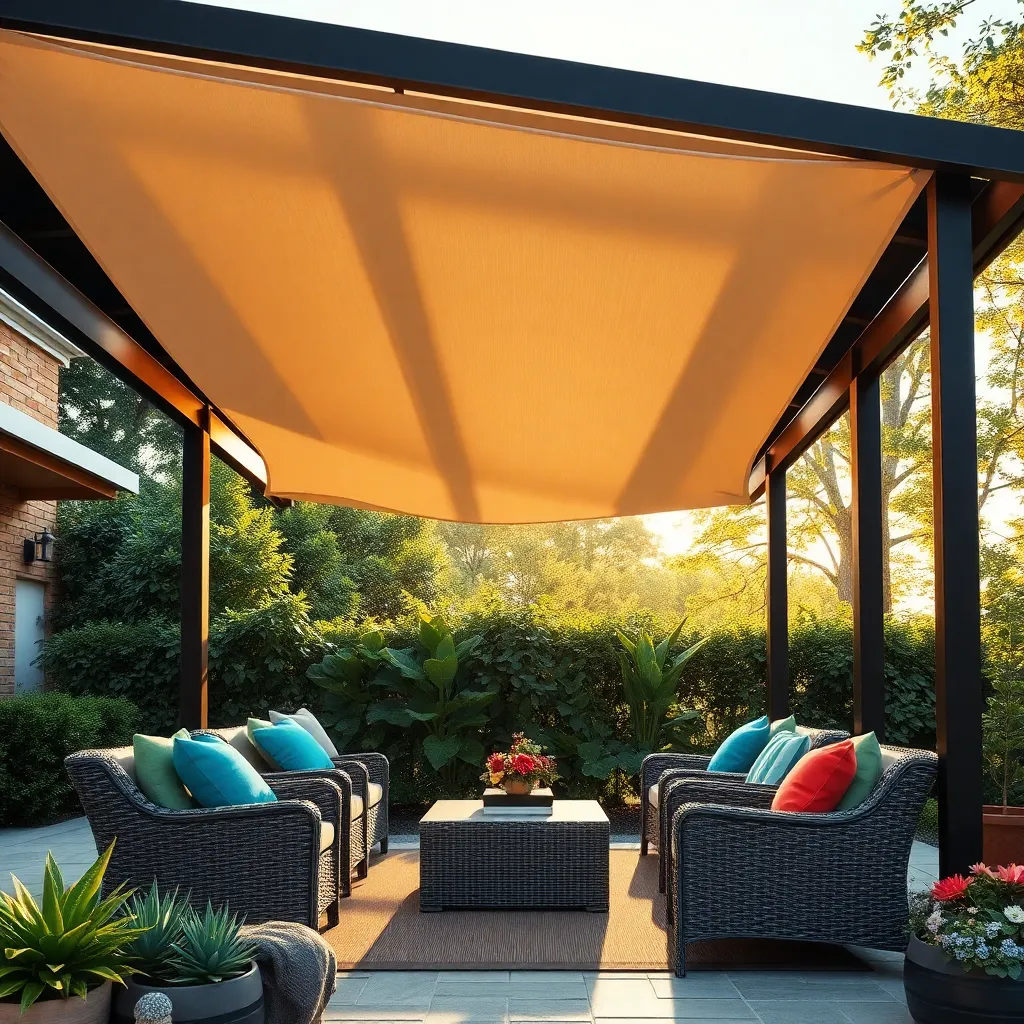
When selecting materials for your garden canopy, choosing those with UV-blocking properties is essential to protect both you and your plants from harmful sun exposure. Opt for fabrics like acrylic-coated polyester or Sunbrella, which not only provide excellent UV protection but are also durable and weather-resistant. For those looking to experiment with advanced design, consider incorporating UV-filtering polycarbonate panels, which offer a stylish, modern look while effectively blocking ultraviolet rays.
Additionally, ensure your canopy is designed with proper ventilation to prevent heat buildup underneath. This can be achieved by incorporating grommets or vents in the fabric structure or by opting for adjustable side panels to control airflow. For a more advanced setup, you might include retractable options that allow you to adjust the canopy’s shade coverage throughout the day, maximizing UV protection while maintaining comfort and style in your garden oasis.
Include Built-In Seating Areas
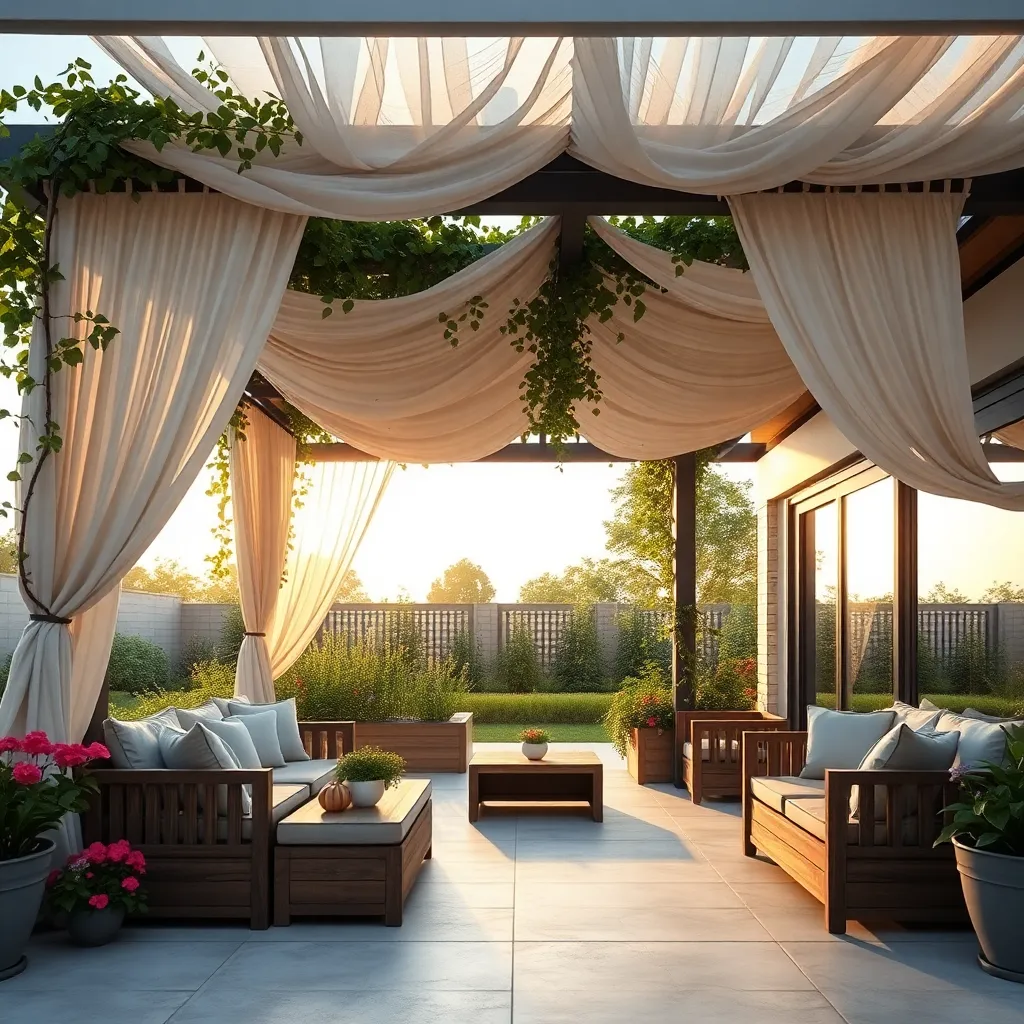
Incorporating built-in seating areas under your garden canopy can significantly enhance both functionality and aesthetics. Consider using durable materials like weather-resistant wood or composite decking to ensure longevity. For beginners, starting with a simple bench design that complements the canopy structure is a great option. Advanced DIY enthusiasts might explore integrated seating with storage options, providing a dual-purpose solution that maximizes space efficiency.
To maintain comfort and style, use cushions made from outdoor fabrics that resist moisture and UV rays. Ensure the seating layout complements the overall flow of your garden by balancing proximity to pathways and garden features. For a more personalized touch, add adjustable backrests or armrests to your seating design, which can be incorporated easily with basic carpentry skills. Remember, the key is to create a welcoming space that invites relaxation and enjoyment while withstanding the elements.
Integrate Solar-Powered Features
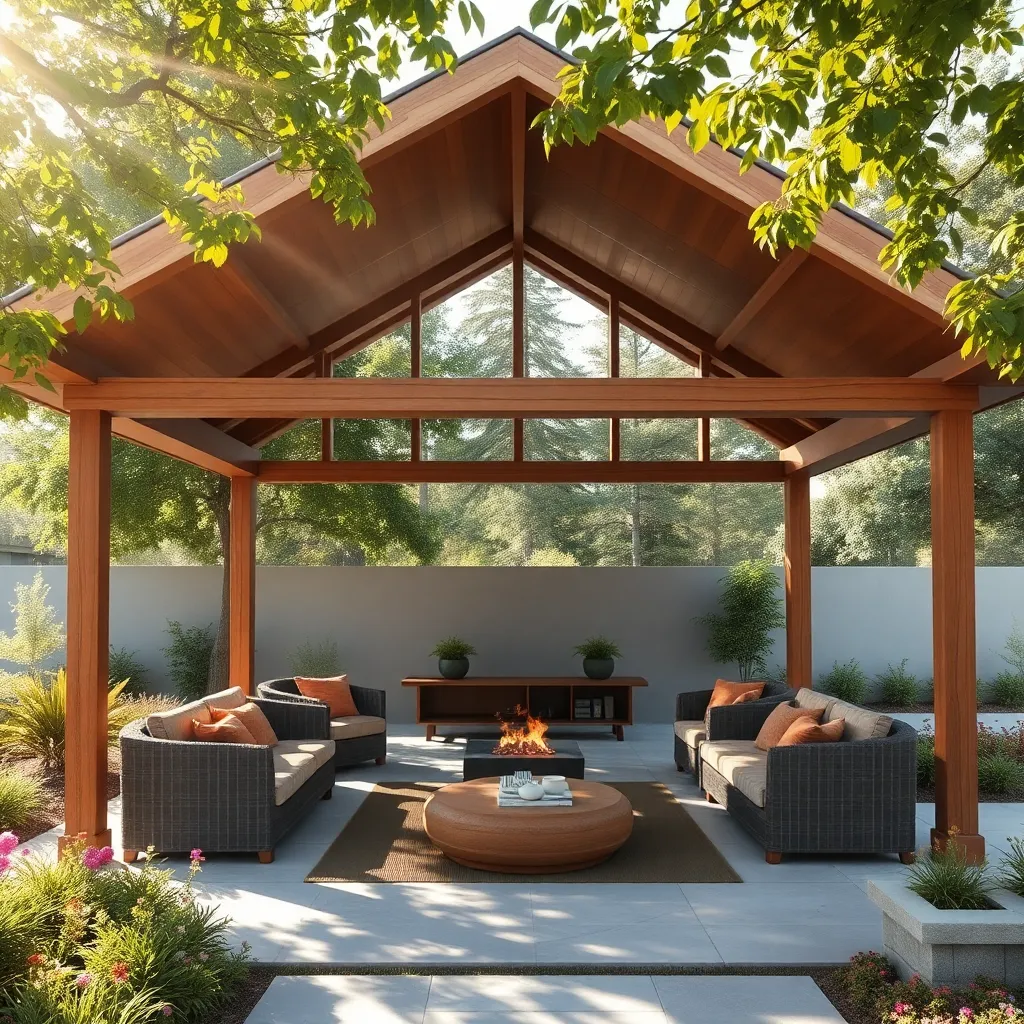
Enhancing your garden canopy with solar-powered features can significantly improve both its functionality and sustainability. Start by installing solar-powered LED lights that automatically illuminate at dusk, creating a warm and inviting atmosphere without increasing your electricity bill. For a more advanced setup, consider integrating solar panels on the canopy roof. This can efficiently power small appliances like fans or even a water feature, providing comfort and ambiance.
When selecting materials, opt for durable and weather-resistant options such as aluminum or treated wood for the canopy structure to support solar installations. Ensure the roof has a slight angle to maximize sunlight exposure, ideally facing south for most regions. Beginners can start with simple solar light kits, while those more experienced might explore DIY solar panel setups with a battery storage system. This not only enhances your outdoor space but also contributes to a greener lifestyle.
Use Modular Designs for Versatility
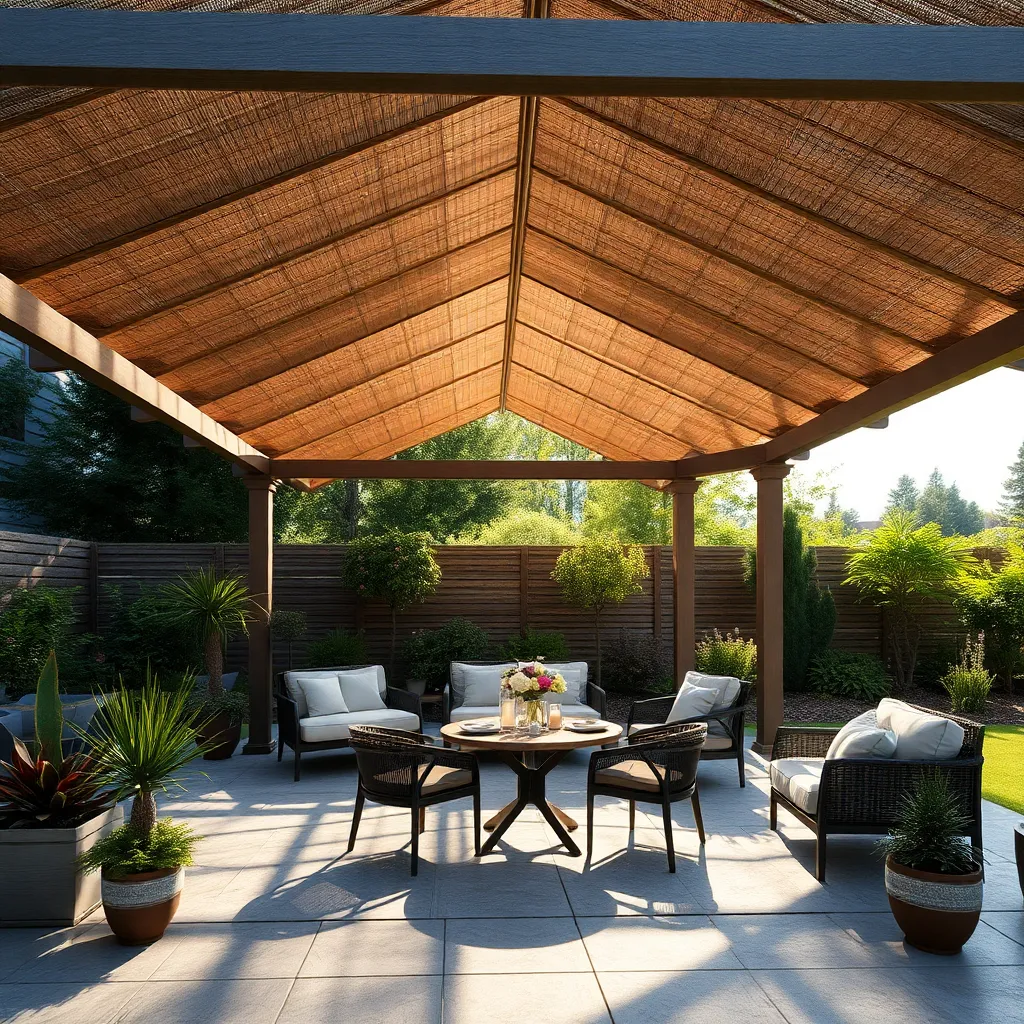
For a versatile garden canopy, consider using modular designs that can adapt to your changing needs. These systems allow you to easily extend or reconfigure your shelter as your garden evolves. Start with a basic framework using durable materials like aluminum or treated wood, which are both weather-resistant and easy to handle. As your needs grow, you can add components like adjustable panels or retractable fabric sections to provide flexible shade and protection.
Beginner gardeners might start with a simple kit that includes pre-cut pieces and clear instructions, ensuring a straightforward assembly process. For those looking to add a personal touch, consider customizing with elements such as interchangeable colored panels or integrated lighting for evening use. Advanced gardeners can enhance their modular canopy with smart technology, such as automated retractable awnings controlled via smartphone. Remember, the key is to choose a design that allows for easy updates, keeping your outdoor space fresh and functional.
Conclusion: Creating Beautiful Outdoor Spaces
In exploring these 11 garden canopy ideas, we’ve uncovered key relationship concepts that beautifully parallel the nurturing of both gardens and connections. From creating a sturdy foundation with pergolas to embracing spontaneity like the whimsy of a sail shade, each idea speaks to building trust, fostering communication, cherishing shared spaces, and celebrating individuality within the partnership. We also touched on the importance of adaptability, investment in growth, and finding joy in the journey, mirrored by the diverse canopy options that enhance both beauty and functionality.
As a next step, consider choosing one canopy idea that resonates most with your current relationship goals. Perhaps it’s time to create a shared project that symbolizes your commitment, or simply find new ways to enjoy your shared space together. By bookmarking this article, you’ll have these insightful relationship tips at your fingertips whenever you need a refresher or feel inspired to try something new.
Remember, like any thriving garden, successful relationships require patience, care, and a willingness to grow together. As you nurture your connections, envision a future where your relationship blossoms in abundance. Save this article now, and let it be your guide to cultivating lasting love and connection.
